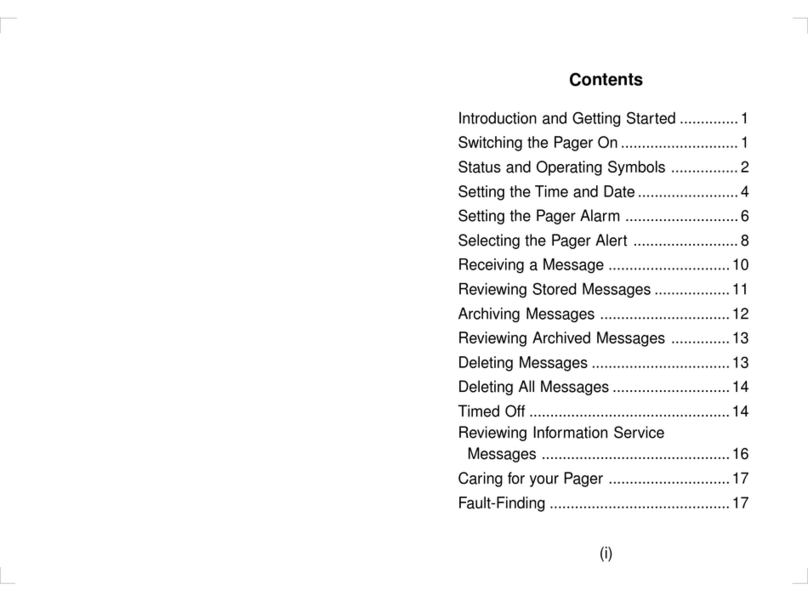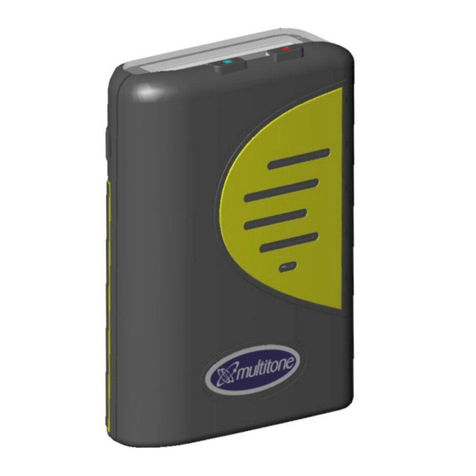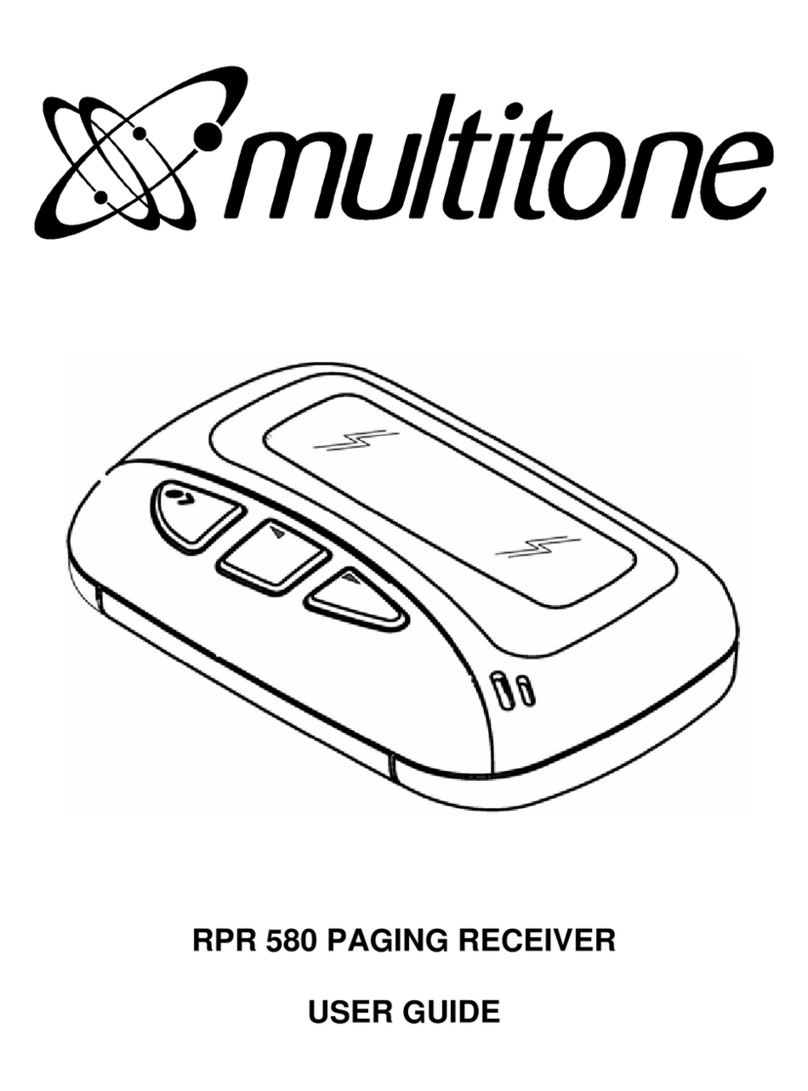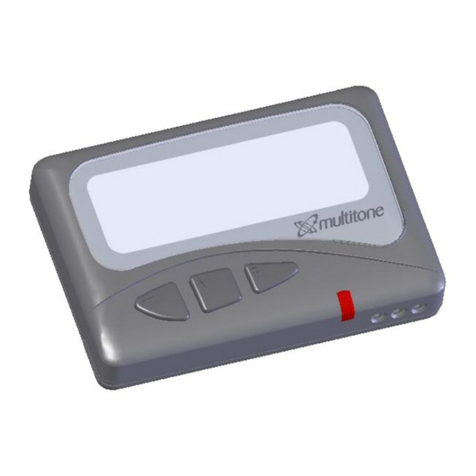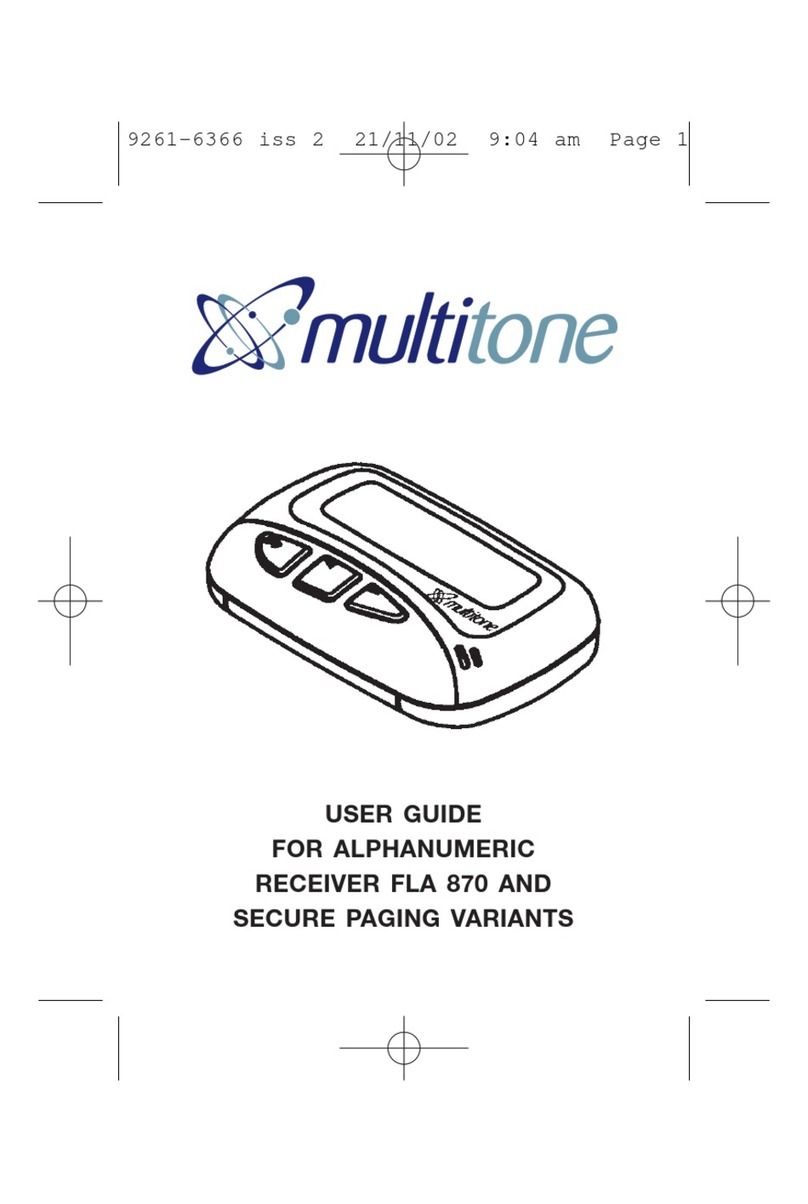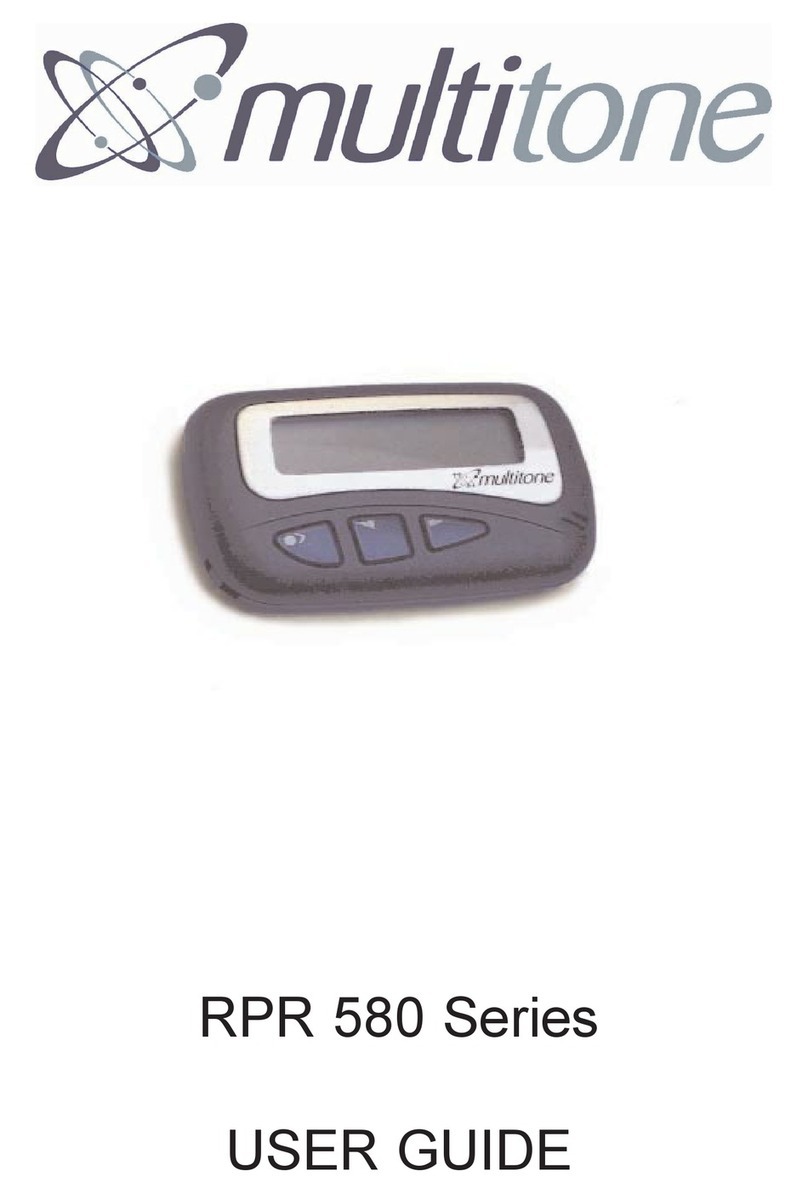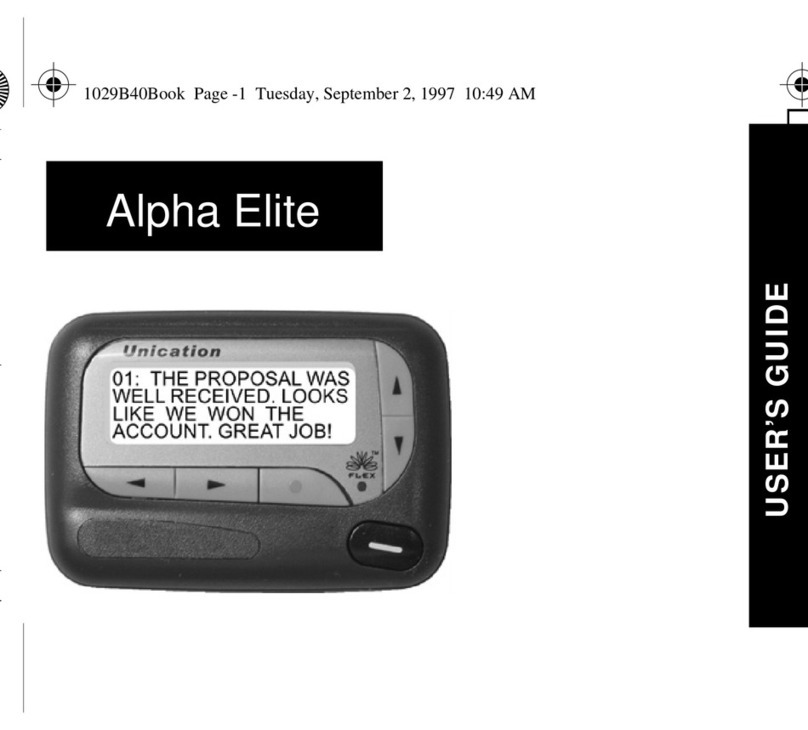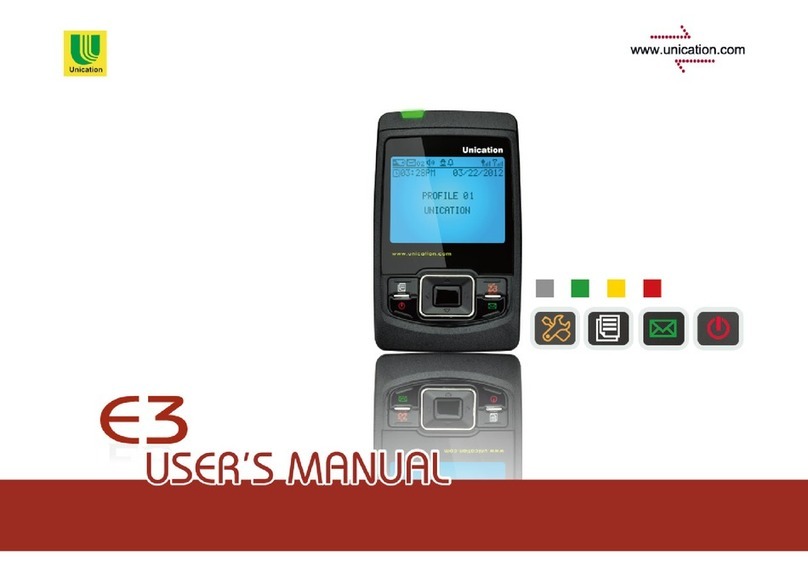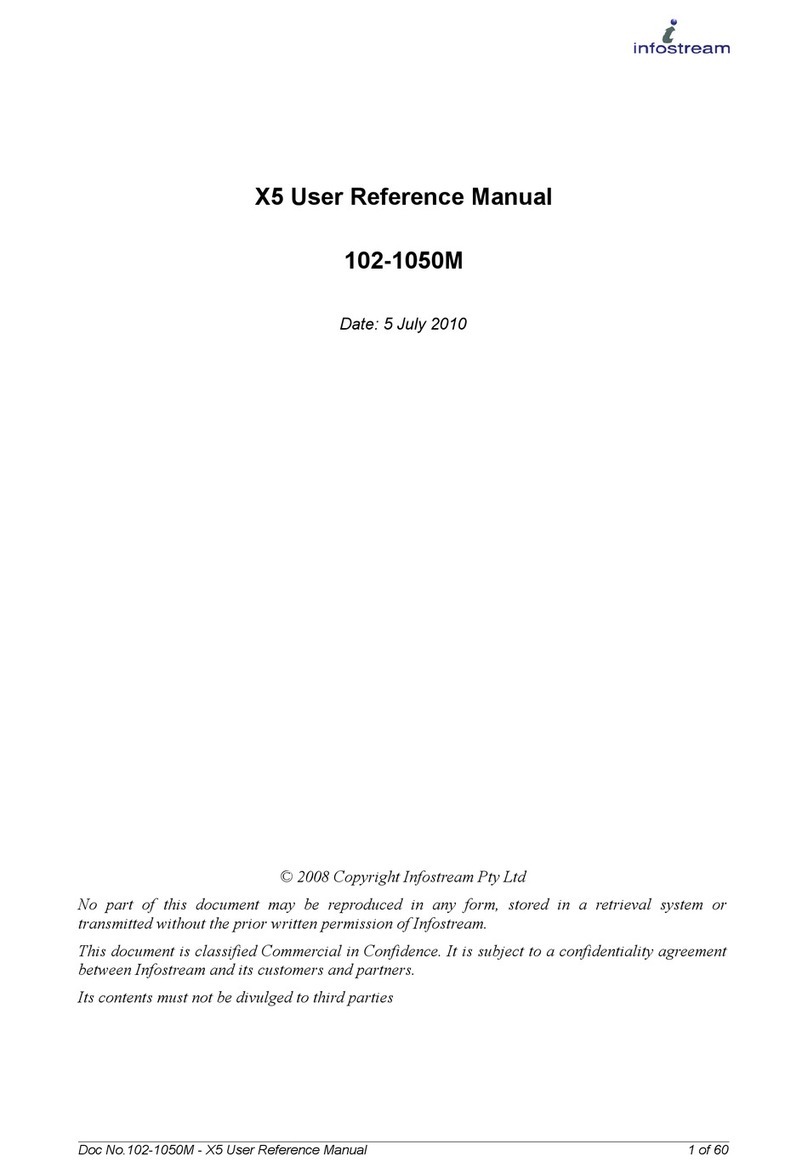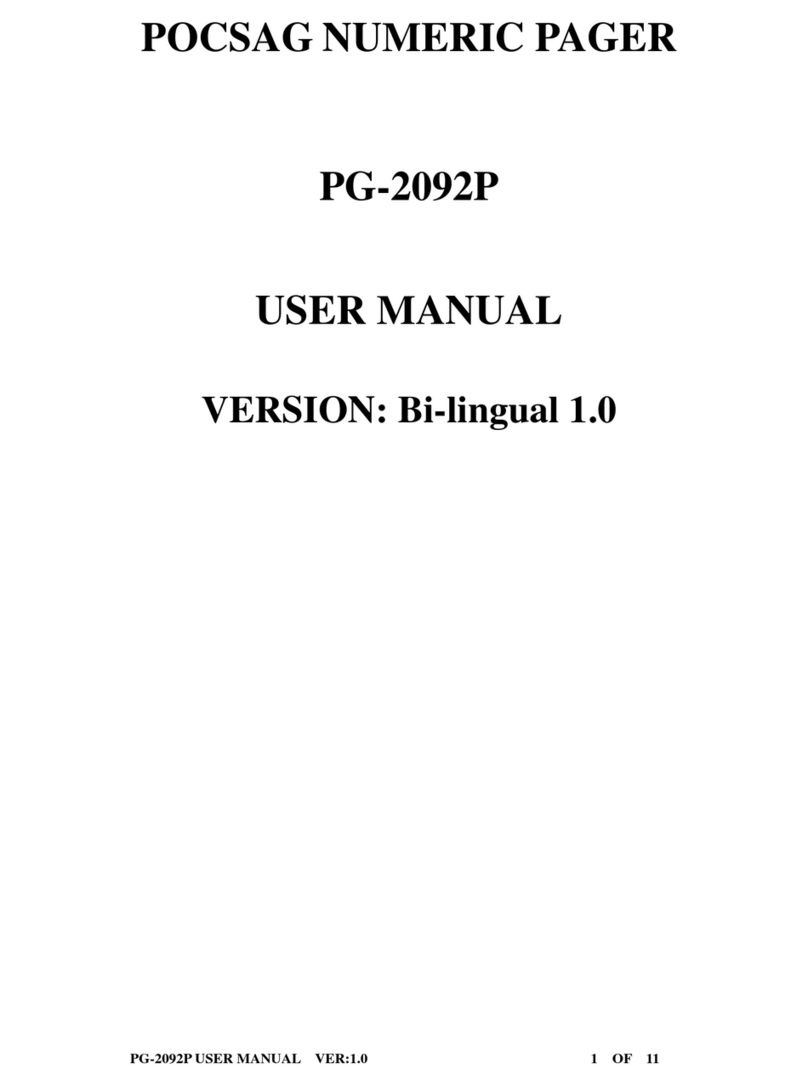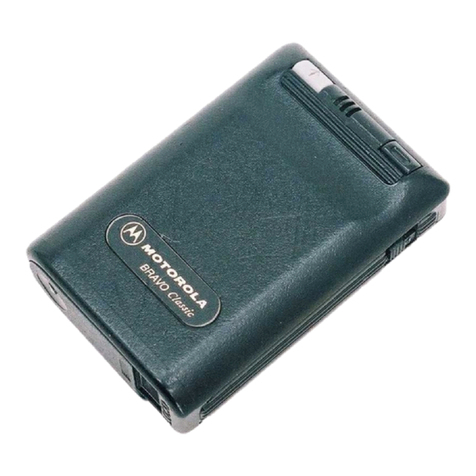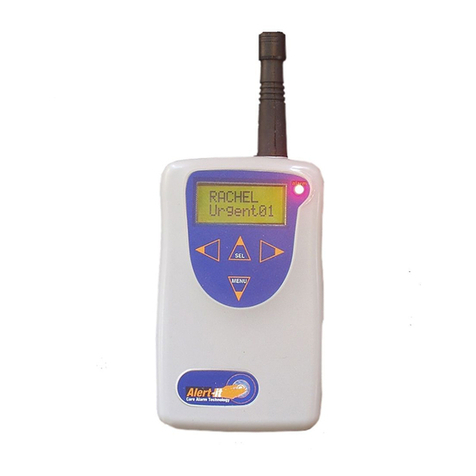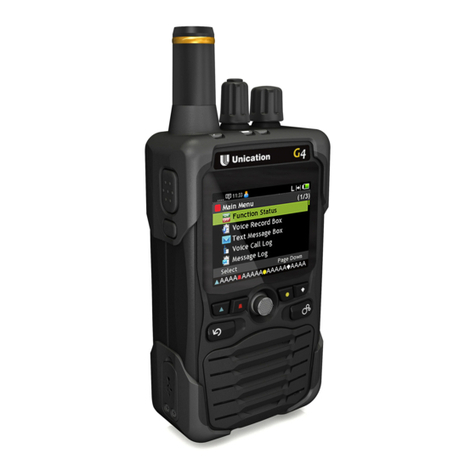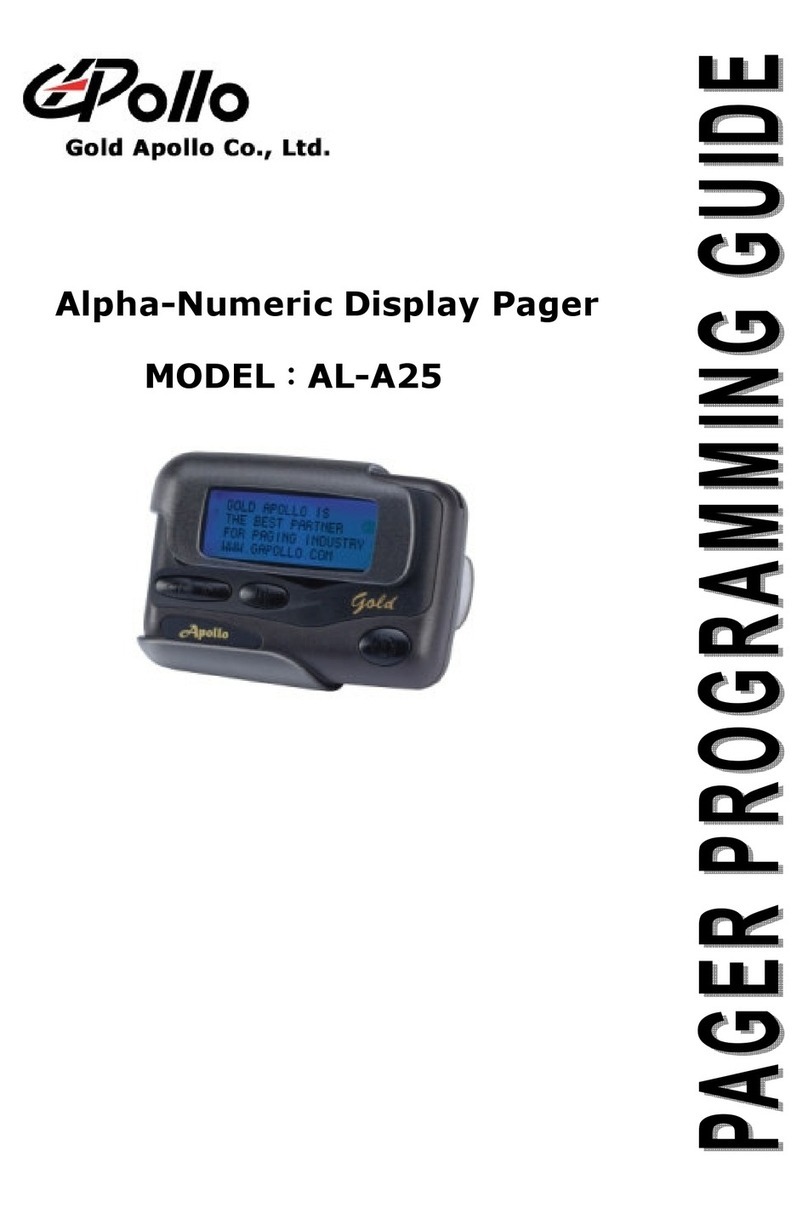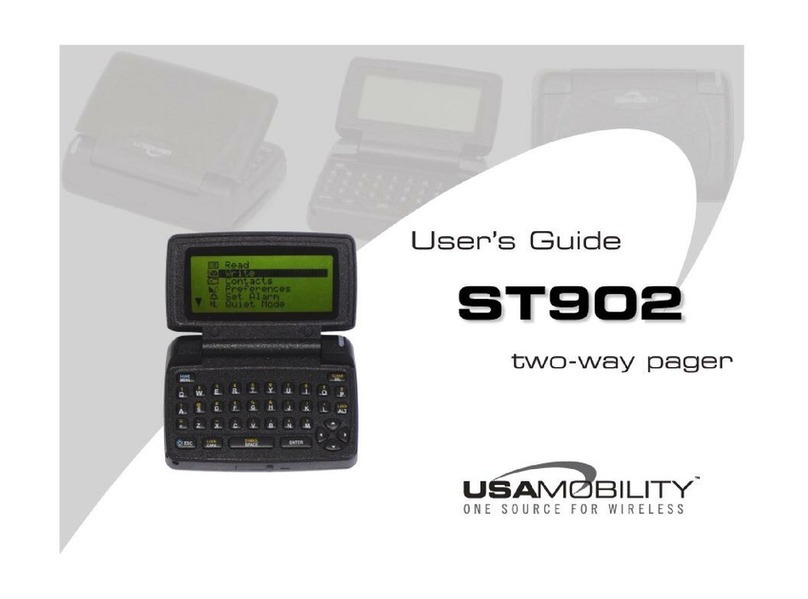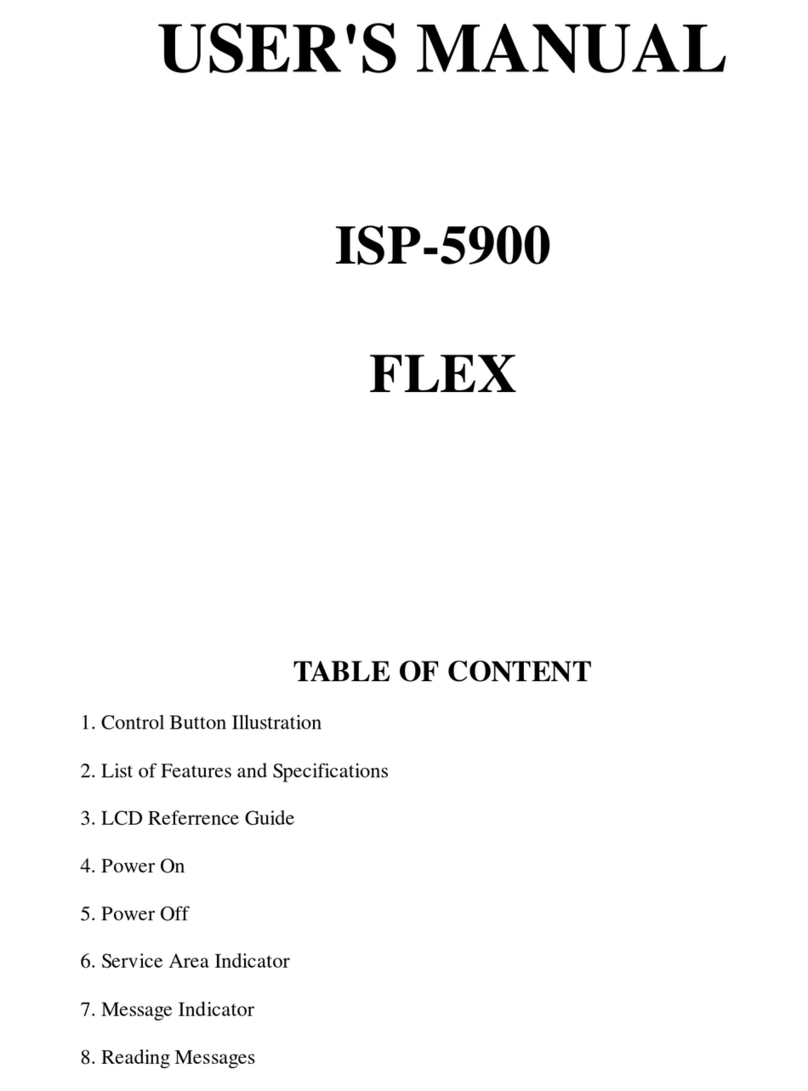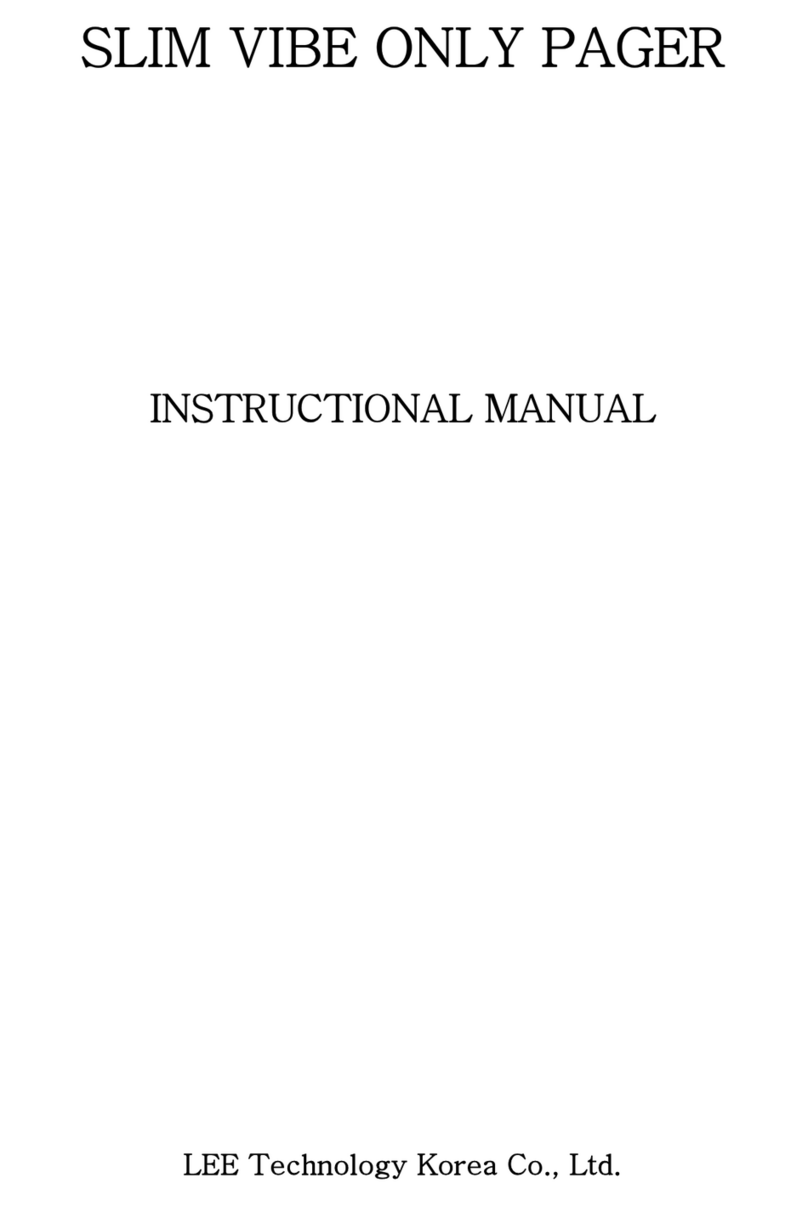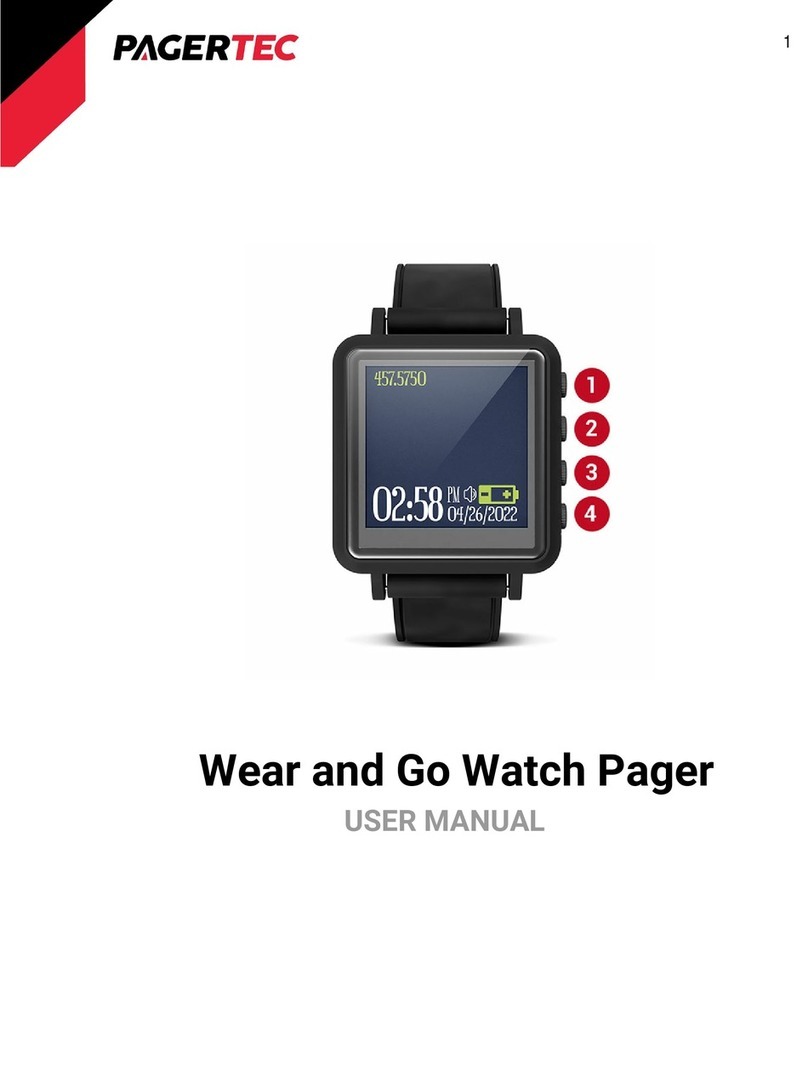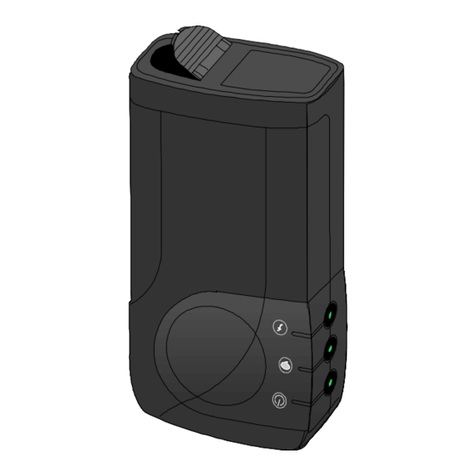
RPR 950 Series
9261 – 9558 Issue 1 10
during the alert period, each being displayed for 1.25 seconds
except for the final screen, which is shown for 2.5 seconds.
This process is then repeated until the end of the alert period,
but if the call is cancelled before this time, the message will be
scrolled through again from the beginning and pause on the
final screen.
Example of a message larger than 14 characters: -
If a call is cancelled during the alert period, the MUTE button
may be used to review the message and to speed-up, or slow-
down, the viewing process. If MUTE is pressed and held, the
message is held at the current screen; releasing MUTE
causes the next screen to be displayed. If MUTE is pressed
and released during the final message screen, then the
display will revert to the first part of the message and the
whole message viewing process may be repeated.
Speech Calls
When receiving any call that has a speech message attached,
your pager will activate the alert sequence. This sequence will
include the flashing LED together with the alert tone at normal
volume, for a period of 4 seconds and additionally the display
of any alphanumeric message and/or call time/number data.
After 4 seconds, the speech channel will automatically open
and the spoken message will be heard.
The speech channel will close again automatically at the end
of a pre-determined time, or upon the receipt of a speech
termination signal, depending upon your system.
If during the 4 second alert period the OCR button is pressed,
it will terminate the call and a further press will terminate the
speech. If the OCR button is pressed again within the speech
time-out period, the speech channel will be re-opened.
13:27 Your visitor has
arrived in reception**
+
+
+
